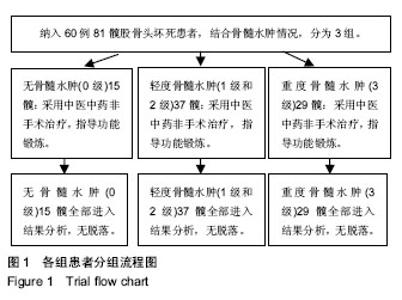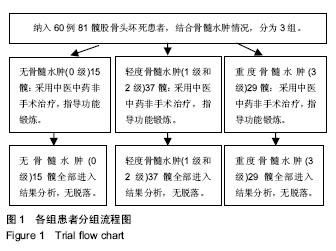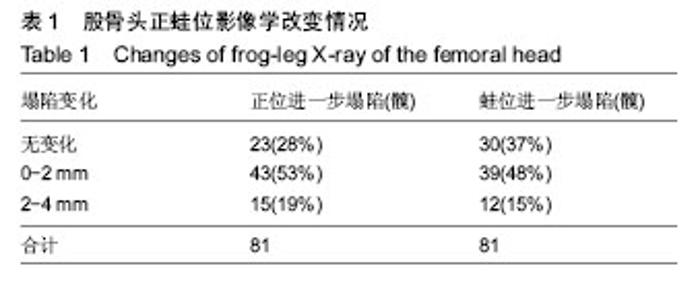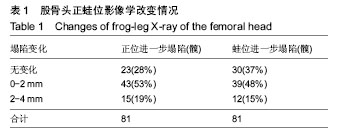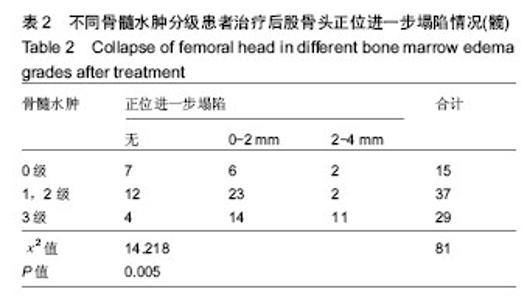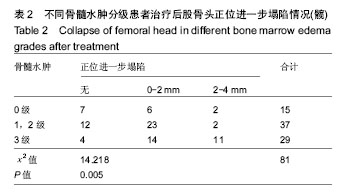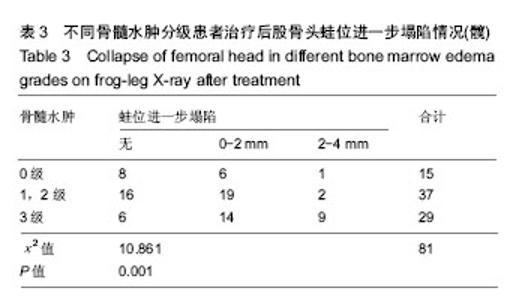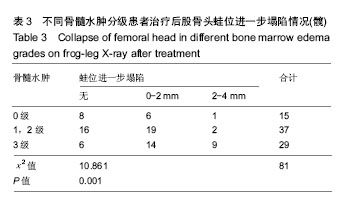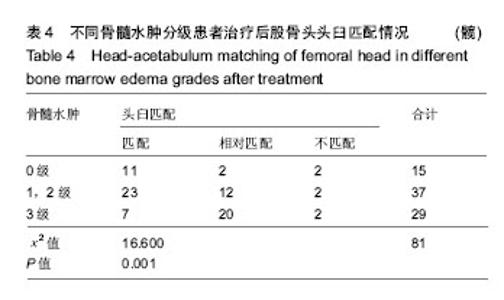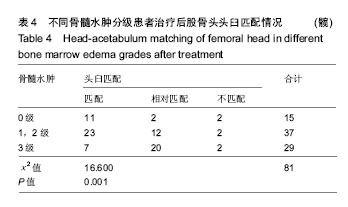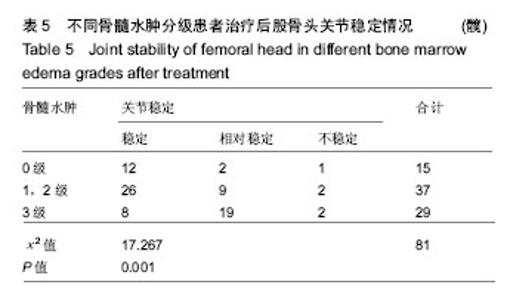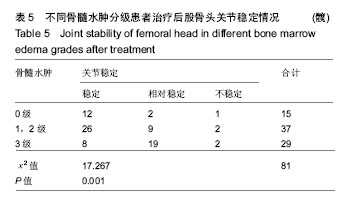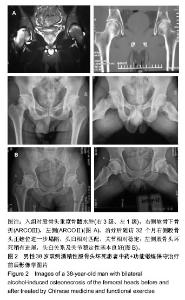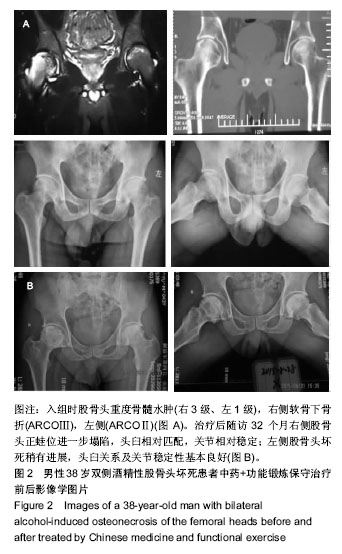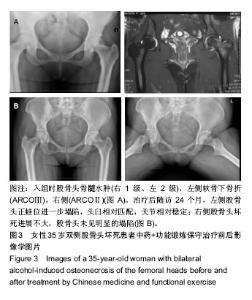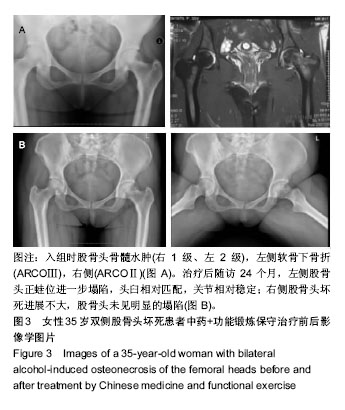| [1] Plenk H,Gstettner M,Grossschmidt K,et al.Magnetic resonance imaging and histology of repair in femoral head osteonecrosis. Clin Orthop Relat Res.2001;386:42-53.[2] 赵培荣,庄奇新,乔瑞华,等.股骨头缺血坏死骨髓水肿的MRI研究[J].实用放射学杂志,2006,22(7):835-837.[3] 刘少军,王海彬,袁浩.生脉成骨片对早期股骨头坏死塌陷的影响[J].新中医,2007,39(9):49-51.[4] 曾平.创伤性股骨头坏死塌陷前期的临床研究[D].广州:广州中医药大学,2008.[5] 何伟,李勇,张庆文,等.股骨头坏死保髋手术的疗效评估[C]//中华中医药学会骨伤分会学术年会暨国家中医药管理局"十一五"重点专科,2008.[6] 庞智晖.股骨头前外侧柱与激素性股骨头坏死预后和保髋疗效的相关性研究[D].广州:广州中医药大学,2008.[7] Iida S, Harada Y, Shimizu K, et al. Correlation between bone marrow edema and collapse of the femoral head in steroid-induced osteonecrosis. AJR Am J Roentgenol. 2000;174(3):735-743.[8] Fujioka M, Kubo T, Nakamura F, et al. Initial changes of non-traumatic osteonecrosis of femoral head in fat suppression images: bone marrow edema was not found before the appearance of band patterns. Magn Reson Imaging. 2001;19(7):985-991.[9] Kim YM, Oh HC, Kim HJ. The pattern of bone marrow oedema on MRI in osteonecrosis of the femoral head. J Bone Joint Surg Br. 2000;82(6):837-841.[10] Mont MA, Cherian JJ, Sierra RJ, et al. Nontraumatic osteonecrosis of the femoral head: where do we stand today? a ten-year update. J Bone Joint Surg Am. 2015;97(19): 1604-1627.[11] Guilak F.Vail T.Magnussen RA. Articular cartilage degeneration in post-collapse osteonecrosis of the femoral head. Radiographic staging, macroscopic grading, and histologic changes.J Bone Joint Surg. 2005;6(87): 1272-1277.[12] 赵德伟,程亮亮.国内股骨头坏死保留髋关节手术治疗的十年回顾[J].中华骨科杂志, 2017, 37(3):183-192.[13] 曾平,赖崇荣,李金溢,等.围塌陷期股骨头坏死的联合治疗:髓芯减压、自体髂骨打压植骨、异体腓骨植入与中药[J].中国组织工程研究,2018,22(36):5746-5752.[14] 陈群群.股骨头坏死骨髓水肿与塌陷的临床及骨形态计量学分析[D].广州:广州中医药大学,2017.[15] 何伟.股骨头坏死带塌陷生存的是与非[C]//中国修复重建外科专业委员会骨缺损与骨坏死研讨会,2013. |
